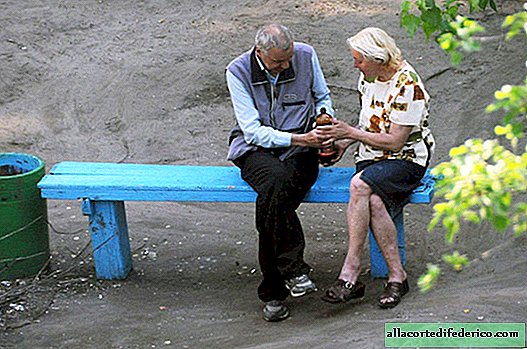Psychology of personality: how much we depend on the opinions of others
Our behavior largely depends on the opinions of others and on the environment in which we are. And this dependence is much stronger than it might seem at first glance. And if you think that you are an adult and self-sufficient person, and your words and actions in any situation are exclusively your personal choice, then we suggest that you familiarize yourself with the results of interesting experiments conducted by scientists from different countries.
Experiment "Room in the smoke"

The test person is in the room along with other participants in the experiment who are given the task in advance not to react to what is happening and to behave as if nothing strange is happening. Participants in the experiment are handed out questionnaires and asked to answer a few questions. Everyone is concentrated on business, when suddenly smoke begins to penetrate into the room from under the door. Participating actors calmly continue to fill out the test. In this situation, only 1 person out of 10 test subjects immediately left the room and called for help. The remaining 9 people continued to sit in the room, answer questions and wipe their watery eyes.
In another part of the experiment, each of the subjects (they were already different people) was in the room alone. And 75% of people with the appearance of smoke immediately responded to what was happening and called for help.
Conclusion: people respond to emergency and life-threatening situations much more calmly and more slowly in the presence of a passive environment.
Asha experiment
It was conducted by the American psychologist Solomon Eliot Ash. A group of students participated in an experiment supposedly to test eyesight. One student who answered the most recent questions was a real test subject, and all other participants were "decoy ducks." The subjects were offered two cards.

It was necessary on the second card to find a line of the same length as on the first card. In total, 18 cards were offered. To these simplest questions, "conspiracy participants" at first answered equally equally incorrectly, and in the end a real test subject. As a result, 37% of incorrect answers were received to such a simple question. In the case when the "conspirators" were given the task of responding incorrectly, but in different ways, the number of test subjects' errors decreased by 4 times. And in the control group, in which there were no "decoy ducks", out of 35 people, only one incorrect answer was received.
Conclusion: A person is inclined to agree with the erroneous opinion of the majority, just not to look like a "black sheep", even if this opinion clearly does not coincide with his own.
Experiment "Portraits"

This experiment was conducted in 1971 in the USSR for the film "I and Others" by psychologist Valery Mukhina. A group of students was invited to consider 5 portraits of older people and find among them two photographs of the same person taken at different times. The experiment was attended by student actors who were given the task to indicate two portraits of different people. After everyone gave answers, the "conspirators" began to argue their incorrect answers with "far-fetched" similarities. As a result, after several minutes of “evidence”, most of the subjects changed their opinion from correct to erroneous, making sure that the majority was “correct”.
In the second part of the experiment, the assignments for the "conspirators" were changing: they had to argue that the photographs of a man and a woman depicted the same person. And even in this case, the majority of the subjects, after "compelling reasons", agreed with the wrong answer.
Conclusion: A person is easily suggestible and changes his original correct opinion to absurd, if the majority of those around him adhere to the same opinion.


















